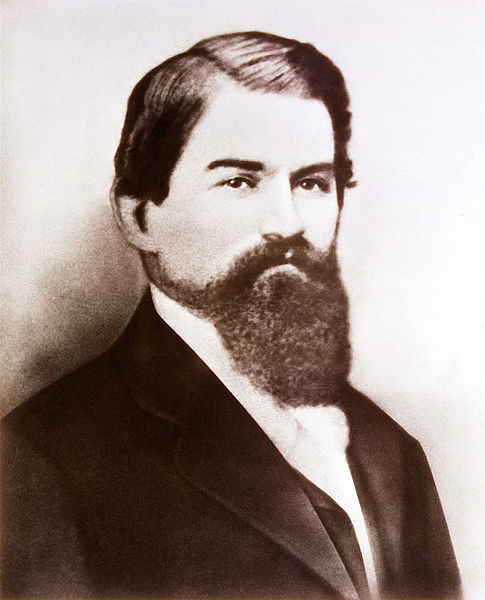Originally marketed as a temperance drink and intended as a patent medicine, and then became one of the most known brands with a market of over 200 countries worldwide have the drink and more than 1.8 billion beverage servings each day.
Here are some crazy facts about the iconic drink.
It was invented by a pharmacist
Confederate Colonel John Pemberton, who was wounded in the American Civil War and became addicted to morphine, began a quest to find a substitute for the problematic drug.
In 1885 at Pemberton's Eagle Drug and Chemical House, a drugstore in Columbus, Georgia, he registered Pemberton's French Wine Coca nerve tonic.
Pemberton's tonic may have been inspired by the formidable success of Vin Mariani, a French-Corsican coca wine, but his recipe additionally included the African kola nut, the beverage's source of caffeine.
Coca-Cola contains cocaine
The saying that Coca-Cola contains cocaine is not completely a myth.
When launched, Coca-Cola's two key ingredients were cocaine and caffeine. The cocaine was derived from the coca leaf and the caffeine from kola nut (also spelled "cola nut" at the time), leading to the name Coca-Cola.
A glass of Coca-Cola stayed at 5 cents for over 70 years
Between 1886 and 1959, the price of a 6.5-oz glass or bottle of Coca-Cola was set at five cents, or one nickel, and remained fixed with very little local fluctuation. The Coca-Cola Company was able to maintain this price for several reasons, including bottling contracts the company signed in 1899, advertising, vending machine technology, and a relatively low rate of inflation.
In the 1940s, inflation in the United States had begun to accelerate, making nickel Coke unsustainable, which led The Coca-Cola Company to seek ways to increase the five cent price including ending placing "five cents" on its new advertising material and even approaching the U.S. Treasury Department in 1953 to ask that they mint a 7.5 cent coin but the latter was unsympathetic.
In another attempt, the company briefly implemented a strategy where one in every nine vending machine bottles was empty. The empty bottle was called an "official blank".
This meant that, while most nickels inserted in a vending machine would
yield cold drinks, one in nine patrons would have to insert two nickels
in order to get a bottle. This effectively raised the price to 5.625
cents.
After this, the price continued raising and by 1959, the last of the nickel Cokes had been sold.
White Coke
Coca-Cola has a high degree of identification with the United States, being considered by some an "American Brand" or as an item representing America. Which made it a bit problematic for some non-Americans to drink it publicly.
Marshal Georgy Zhukov, a prominent figure of the Soviet Union, was a fan of the drink, but since Coca-Cola was regarded in the Soviet Union as a symbol of American imperialism, Zhukov refused to be photographed or reported as consuming such a product, so he asked if Coca-Cola could be manufactured and packaged to resemble vodka.
The Coca-Cola Company granted his wish by making a cola that was of the same original flavor, but with the absence of caramel coloring.
It's used as a medicine.
Even if the idea of using it medically was abandoned a long time ago, Coca-Cola is sometimes used for the treatment of gastric phytobezoars. In about 50% of cases studied, Coca-Cola alone was found to be effective in gastric phytobezoar dissolution.
Unfortunately, this treatment can result in the potential of developing small bowel obstruction in a minority of cases, necessitating surgical intervention







إرسال تعليق